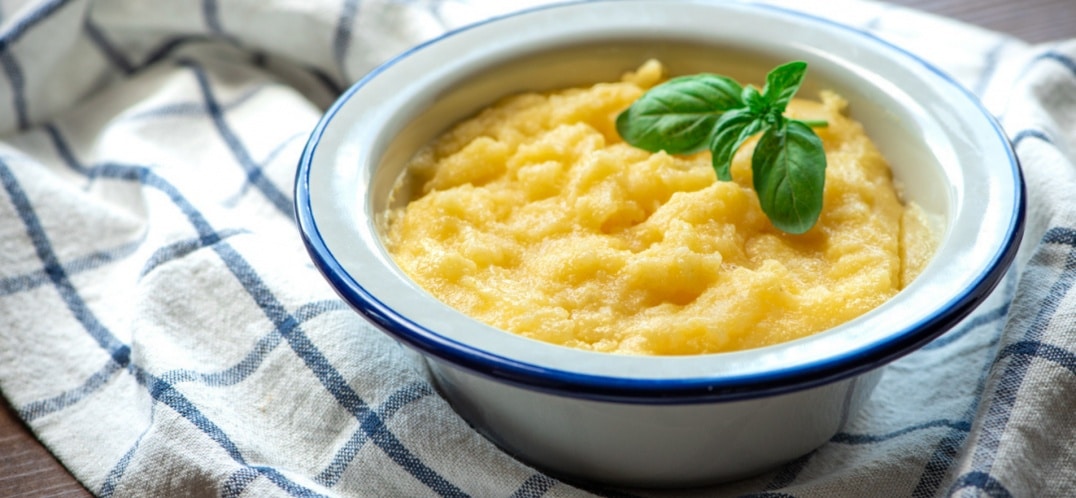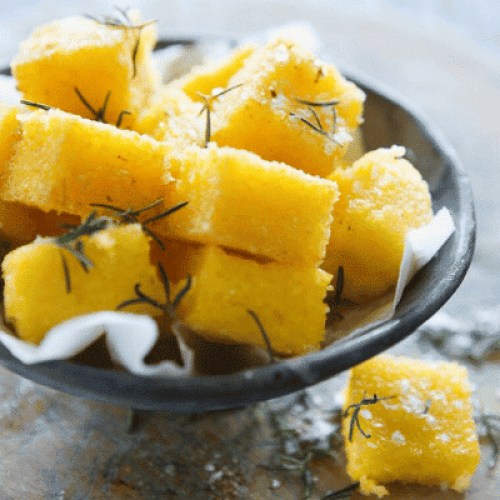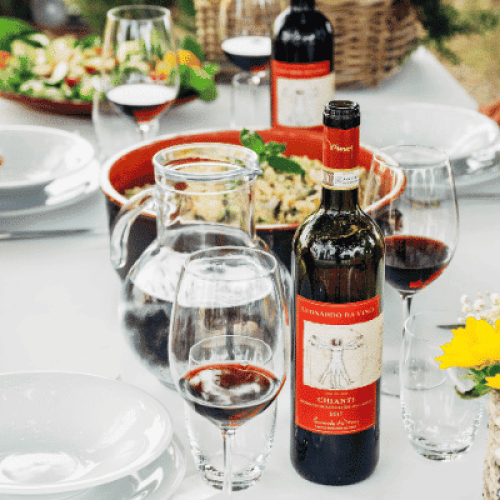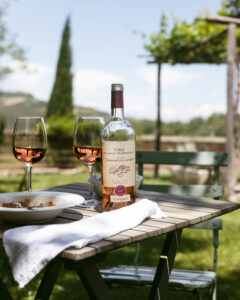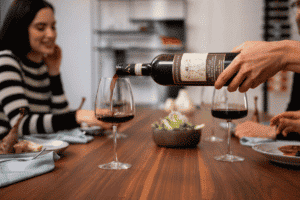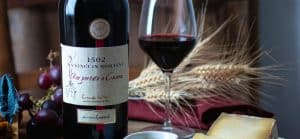Polenta is a simple and ancient dish, typical of Northern Italy, but widespread in every Italian region. The base ingredients are two: corn flour and water. However, there is also a third ingredient which is invisible yet indispensable: time. To make polenta in the traditional way, you need to put the boil water and then throw the flour “a pioggia”, which means ‘like rain’, while continuing to stir without stopping. Polenta is a typical winter dish, invigorating and comfortable. At the same time, it is an economical, tasty and versatile dish because it lends itself to many interpretations.
Polenta and sauces or stews: which are the most popular?
Polenta is almost never tasted alone; it is always accompanied by a sauce or stew. It goes without saying that the pairing of polenta with wine depends precisely on what kind of interpretation you choose to bring this simple and timeless delight to the table.
-
Polenta concia and wine
“Polenta concia” is among the most popular and loved ones. A dish enriched by the taste of cheeses, particularly Alpine ones such as Fontina DOP or Bitto and mountain butter. This energetic dish is ideal for the end of a winter day spent in the snow. The right wine to combine with polenta concia must therefore be robust and medium-bodied, such as the San Zio Toscana IGT from the Villa da Vinci collection, obtained from the best Sangiovese grapes grown in the vineyards of Villa Da Vinci.
-
Polenta taragna and wine
A variant of the traditional yellow polenta is the “polenta taragna”, or simply taragna, in which, in addition to corn flour, buckwheat flour is also used. It is a totally unique dish, typical of the Valtellina region, which gourmets love to serve it with sausages or luganega.
Considering the wide range of Leonardo da Vinci’s proposals, the ideal wine to combine with polenta taragna (which in addition to corn flour is also composed of buckwheat flour, butter and cheese) would also need to be a structured wine, such as the Sangiovese Riserva from the 1502 da Vinci collection in Romagna.
-
Polenta and mushrooms sauce / ragout sauce and wine
We often say that polenta is a versatile dish since it can be combined with any sauce: among the most popular are the combinations with mushroom sauce, or meat sauce (from ragù to goulash, from sausage to stew). In these cases, the wine to be paired with polenta with sauce is usually red: a Rosso di Montalcino, for example, from the I Capolavori collection or a Toscana Rosso from the Leonardo da Vinci collection.
-
Polenta and fish and vegetables
Polenta also goes well with fish sauces or delicate vegetables. So why not try a pairing with white or rosé wines? Portocanale di Cesenatico, is a rosé Sangiovese Rubicone Igt, and gladly accompanies a light dish of fish and polenta. Equally, the Vermentino Streda is the ideal partner for a dish of polenta with a light fish sauce.
Being a dish of peasant origin, polenta has also been the subject of reinterpretations in terms of home economics and “no waste”: for this reason, it is also found in various sweet preparations. In fact, you can even make cakes and biscuits with leftover polenta. In this case, the best pairing would be a sweet and ancient wine such as Vin Santo Toscano.
Polenta recipes can be found in every Italian region: from polenta with cuttlefish that is eaten in Venice; and “frascatula”, a dish made of polenta, potatoes, sauce or cotechino that is eaten in Basilicata, Calabria and Sicily; to fried polenta from Bari and Messina; and the sweet polenta that is prepared in Tuscany. The golden rule to abide by when tasting a dish that are micro-typical of a locality is to pair it with a local wine: because what grows together, goes together.
